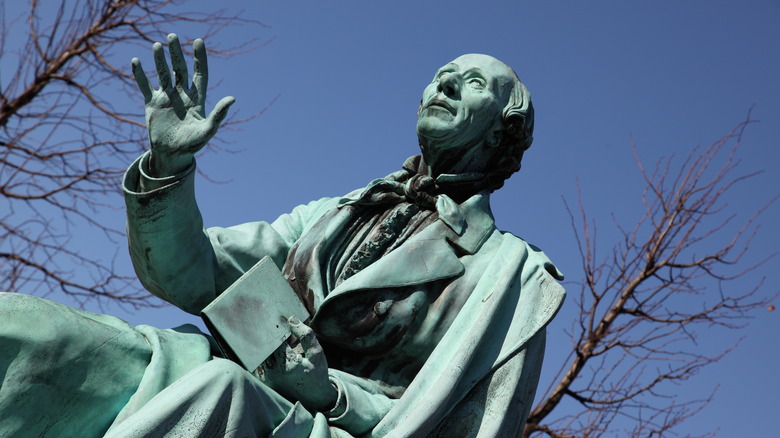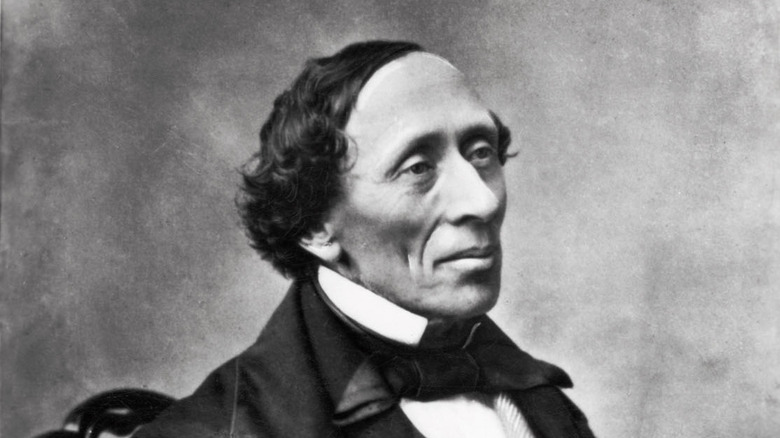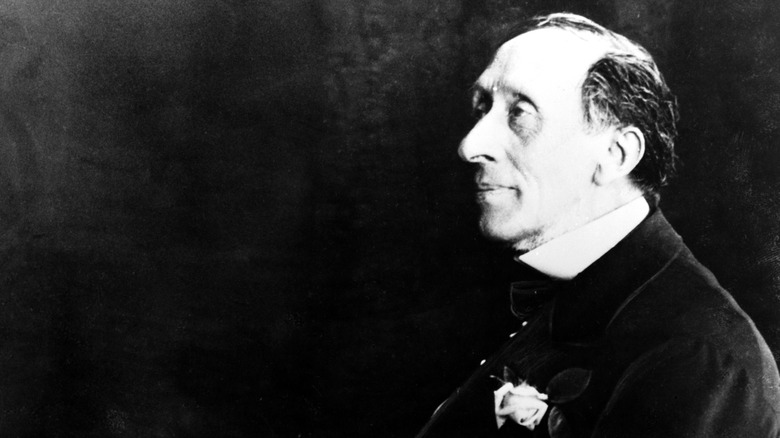The Fears That Haunted Hans Christian Andersen His Entire Life
The stories of Hans Christian Andersen, who found fame as a children's writer in the mid-19th century, have endured to this day. Tales such as "The Little Mermaid," "The Snow Queen," and "The Ugly Duckling" have so powerfully entered the Western popular consciousness that they are considered among the classic fairy tales. Indeed, one of Andersen's collections is titled "New Fairy Tales," showing that he was in fact looking to create work that feels as timeless as the folklore that has been passed down the generations for thousands of years.
Many of the Danish author's works have been retold to modern audiences through other mediums; "The Little Mermaid," for example, has twice been turned into a blockbuster movie by Disney. However, adaptations of Andersen's works are often sanitized, with the darker undertones and more violent aspects of the originals removed to avoid scaring young audiences. But Andersen's works are not dark for the sake of it, and they have been applauded for their complexity and imagination. Unsurprisingly, his life as a writer was an incredible success — but we now know through the research of his biographers that his life was also characterized by many fears.
A chronic hypochondriac
A surfeit of imagination is, obviously, a great benefit to the creator of fairy tales — but as has been widely recorded, Hans Christian Andersen's inventiveness seems to have also been present in the way he viewed his health. In fact, several biographers who have examined his diaries and letters have come to describe him as a hypochondriac, who often thought that he was chronically sick or that a small injury might be the end of him. According to "Hans Christian Andersen: The Story of His Life and Work" by Elias Bredsdorf, one entry in the writer's diary records an incident in which he received a small splinter scratch on his foot. "Perhaps my death will come as a result of such a tiny cause; it must come soon," Andersen ruminated.
The entry is just one of many that show the author was paranoid about experiencing a sudden bodily decline. After feeling dizzy one day, he guessed that it must have been a case of spinal tuberculosis. Elsewhere, after falling out of bed one night and hurting his knee, he told friends that he expected it would lead to hydrarthrosis, a form of arthritis. Though today we would describe such behavior as hypochondria, Andersen's friends and acquaintances often attributed his fears to his "sensitive" nature.
A phobic writer of fairy tales
Hans Christian Andersen's fears weren't reserved solely for potential physical illnesses. In fact, the fairy tale composer went through life harboring a litany of phobias, a number of which caused him to behave in bizarre and eccentric ways.
In "Hans Christian Andersen: The Life of a Storyteller," biographer Jackie Wullschläger chronicles many of Andersen's fears, most notably his taphephobia, or dread of being buried alive. As a precaution, Andersen reportedly often slept with a note near him that assured anyone who might enter his room that he wasn't dead. When he was finally on his death bed, he begged a friend to cut his jugular after he had apparently expired to ensure he didn't somehow wake up again six feet under. Similarly, Andersen was scared of housefires to such an extreme degree that he traveled with a rope with which to climb out of a nearby window if a blaze broke out, according to Wullschläger. Andersen also had a lifelong phobia of dogs, which worked its way into several of his works.
Per "Hans Christian Andersen: The Story of His Life and Work," the writer was also paranoid about being poisoned and panicked if his food tasted unusual. He was also terrified of his food-carrying diseases and refused to eat pork for fear of contracting trichinosis. Trichinae are parasites found in pigs — though evidence suggests that with rates of the infection much higher in Andersen's day than they are now, his fear may have been reasonable.


